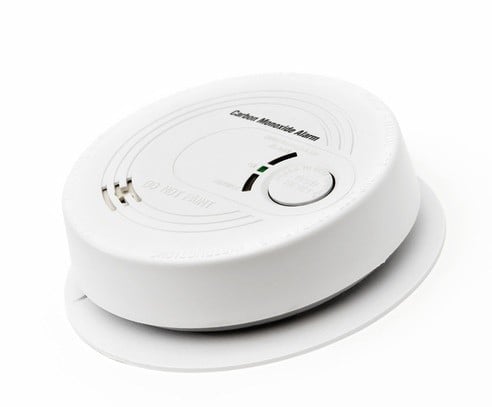What is Carbon Monoxide?
Carbon monoxide is a highly toxic invisible gas. It is the product of incomplete burning of wood and fossil fuels, such as home heating fuel oil and natural gas. Major sources of CO in homes are from fuel burning heaters, water heaters, fireplaces, wood burning stoves, gas clothing dryers and a vehicle running in a closed garage. As these appliances age or are not well maintained, CO can begin to build up. Carbon Monoxide is very dangerous because it is a colorless, odorless, tasteless and non-irritating gas. Inhaling carbon monoxide is harmful and can be fatal.
What Types of Carbon Monoxide Alarms are Required for your Home?
Carbon Monoxide alarms must have the label of a nationally recognized testing laboratory indicating that it is appropriate for its intended use. An example of this would be Underwriters Laboratories (UL). It is recommended that existing buildings use a Carbon Monoxide alarm with a 10-year battery life guarantee. New buildings must have Carbon Monoxide alarms that are hard-wired to an un-switched circuit of the building's electrical system and must be provided with battery back-up in case of power interruption.
Carbon Monoxide and Pennsylvania
According to Gov. Tom Corbett, there is a bill going through the state that will require apartment owners and landlords in Pennsylvania to install carbon monoxide detectors. Landlords will be responsible for installing the device and tenants will be responsible for replacing the batteries or replacing the device if it's removed or broken.
Below is an excerpt from an article published on 12/19/2013 from the Pennsylvania legislation requiring carbon monoxide alarms in homes signed into law.
Proper Placement of Carbon Monoxide Alarms
Installation locations will vary by manufacturer; however, most Carbon Monoxide alarms are required to be installed on the wall or ceilings near the entrance of every bedroom and no closer than 15-20 feet of any fuel burning source.
These are some general guidelines common to most manufacturers:
-
• Alarms should be placed on every level of your home, including the basement, and near or over any attached garage.
-
• They should be located within 10-15 feet outside of each separate
sleeping area. -
• Detectors can be placed on the wall or the ceiling as specified in the
installation instructions. -
•Do not install detectors within 15-20 feet of any furnace or fuel burning
heat source. -
• Detectors should not be placed in or near humid areas, such as
bathrooms. -
• Place alarms in areas where they will not be damaged by children or pets.
-
• Do not install alarms in direct sunlight or areas subjected to temperature
extremes (crawlspaces, unfinished attics, porches). -
• They should not be installed behind curtains or other obstructions.
-
• Alarms may not function as designed if installed near ceiling fans, heat
vents, air conditioners, fresh air returns, or open windows.







